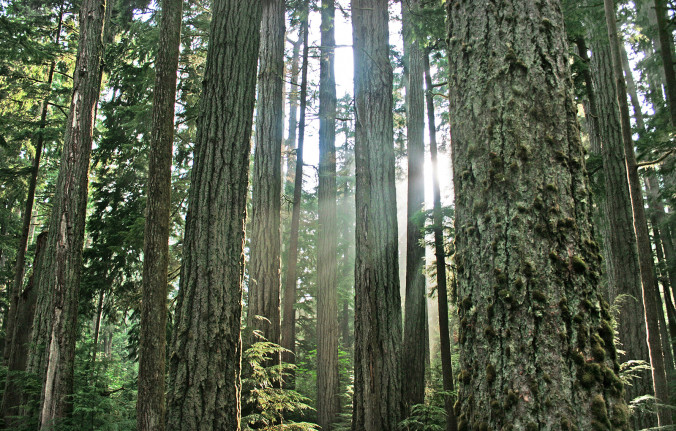Back from Canada where again I was super impressed with the extent and spectacle that British Columbia’s (BC) towering trees and forests present. These forests are truly massive, covering an area of about 60 million hectares. You could drop both France and Germany into BC’s forests and they would disappear beneath the trees. Not forgetting of course that they provide habitat for an iconic population of North American large animals such as black bears, cougars, deer, coyotes and grey wolves.
Most of the remainder of BC consists of alpine or other naturally unforested areas like wetlands and grasslands. Only about two per cent of BC has been converted to agriculture, urban areas and other forms of development.
Canada’s richest forest diversity is found along the BC coast, which stretches from US Washington State north to the Alaska panhandle, with a deeply indented, island-dotted coastline that covers more than 25,000 km. Much of the coast region is remote wilderness, yet it also includes the most heavily populated areas of BC.
Much of BC’s forests are considered to be old growth with trees more than 120 to 150 years of age for non-coastal forests, where fire is a frequent and natural occurrence. For coastal forests, where tree species are longer-lived and fire is rare, old growth is defined as trees more than 250 years old. By this definition, an estimated 43 per cent of BC’s forests are old growth – that is 25 million hectares. In BC’s coastal rainforest, old growth accounts for more than half of the forest, with some trees reaching more than 1,000 years of age.
BC has an estimated one-fifth of the world’s coastal temperate rainforests. The mild, wet climate supports species such as western red cedar, Douglas-fir, western hemlock, amabilis fir and Sitka spruce. These are among the tallest trees in the world, and can reach an enormous size in this highly productive ecosystem.
Black bears… one of the iconic large animals that live in BCs specular forests.
BC’s most widespread tree species is lodgepole pine in the dry forests of the gently rolling plateaus of central BC. Like many interior forests, these pine forests depend on fire for renewal. They are also subject to insect infestations and the province is now experiencing its largest-ever infestation of the mountain pine beetle, which has infested about two million hectares in the west central interior.
BC’s harsh northern climate has given rise to slow-growing forests of spruce, aspen, pine and deciduous shrubs, interspersed with areas of black spruce bogs and alpine tundra. The boreal forests of northeast BC are part of the extensive belt of boreal forests that stretch right across northern Canada.
The valleys of south-central BC are the hottest and driest in Canada. Grasslands provide habitat for some of the province’s rarest plant and animal species, including desert species such as rattlesnakes. Forested areas are dominated by ponderosa pine and Douglas-fir.
